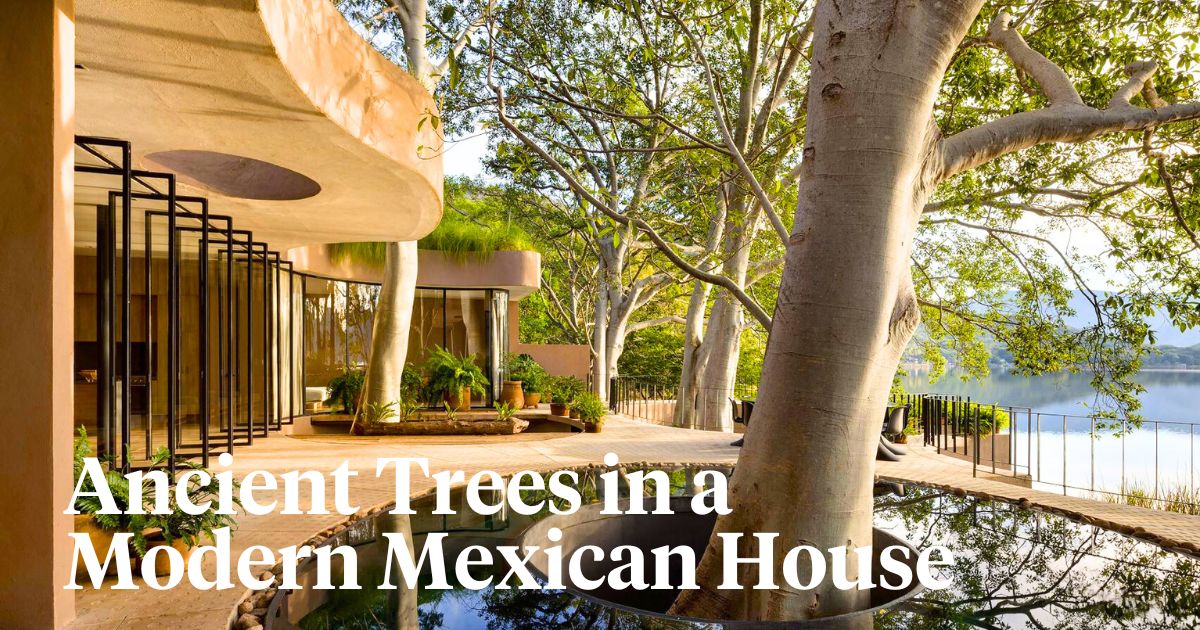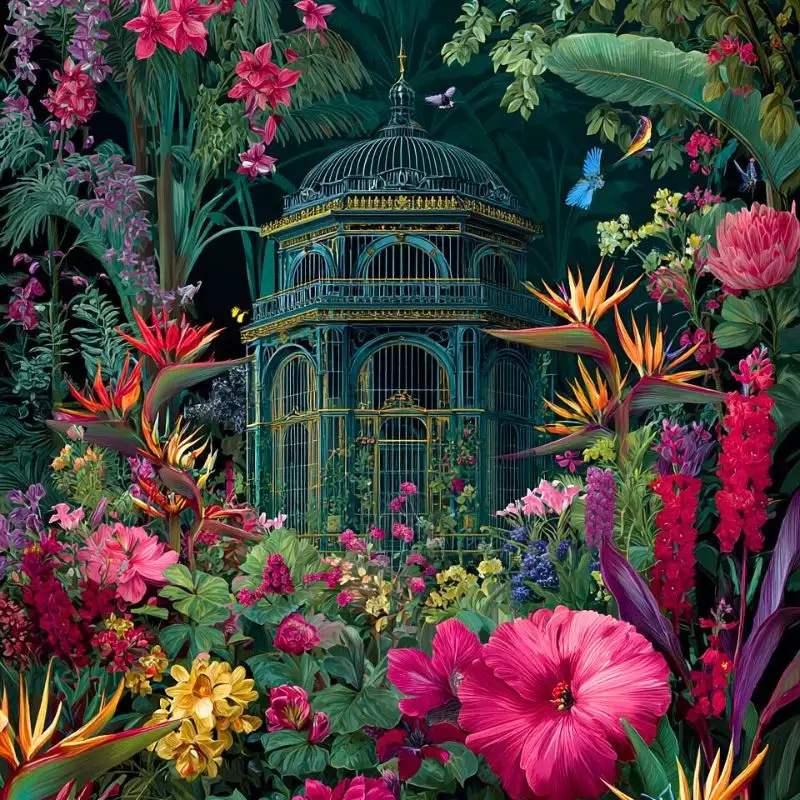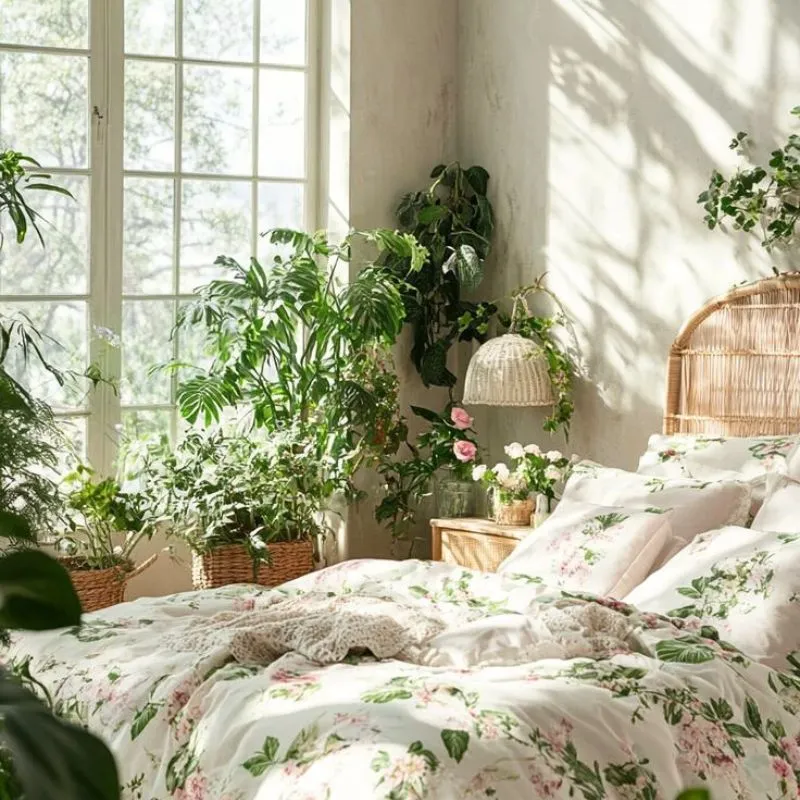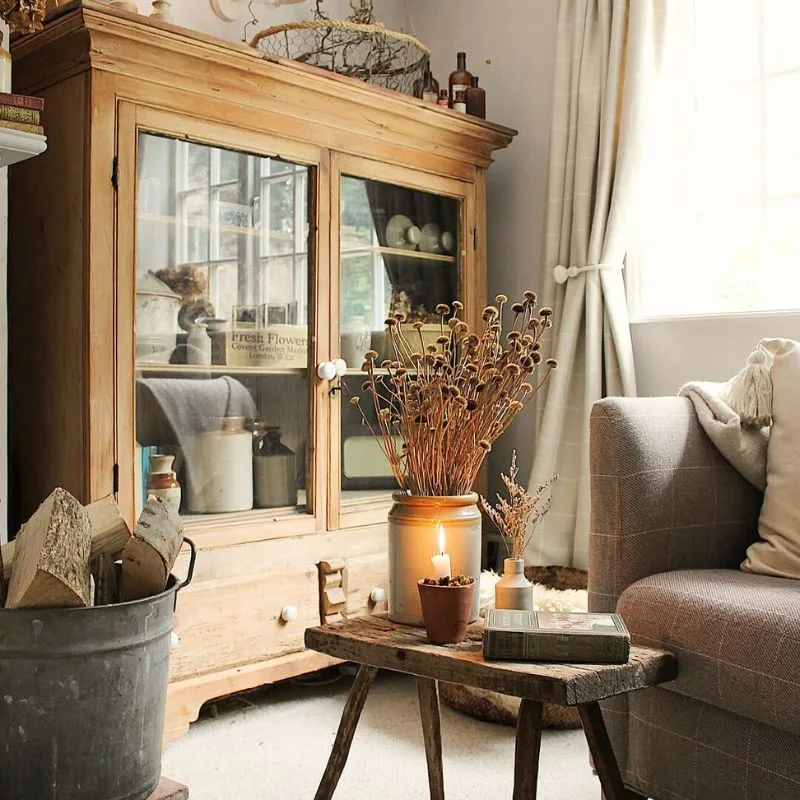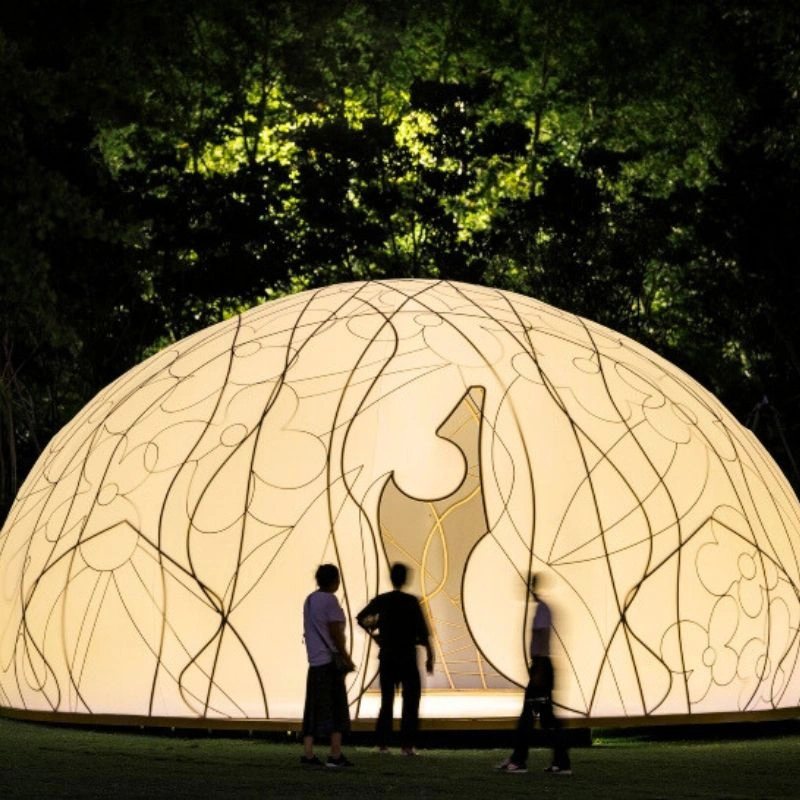Lying close to the serene community of Santa Maria del Oro in Nayarit, Mexico, this architectural design by Mexican studio MCxA Group is a weekend house that jumbles discreetly into the landscape, respecting its delicate ecosystem and local community. The project's origin lies in the profound reverence for five ancient trees that stand as guardians of the site. Quite an amazing story to read and see.
Casa Santa Maria del Oro - A Spot With Five Ancient Trees in Nayarit
To give more context to these five incredible ancient trees (which in hand are the main protagonists of the project), circular forms are subtracted from the structure to honor their presence, allowing these giants to intertwine with the home. This design ethic pays tribute to the environment and the local community.
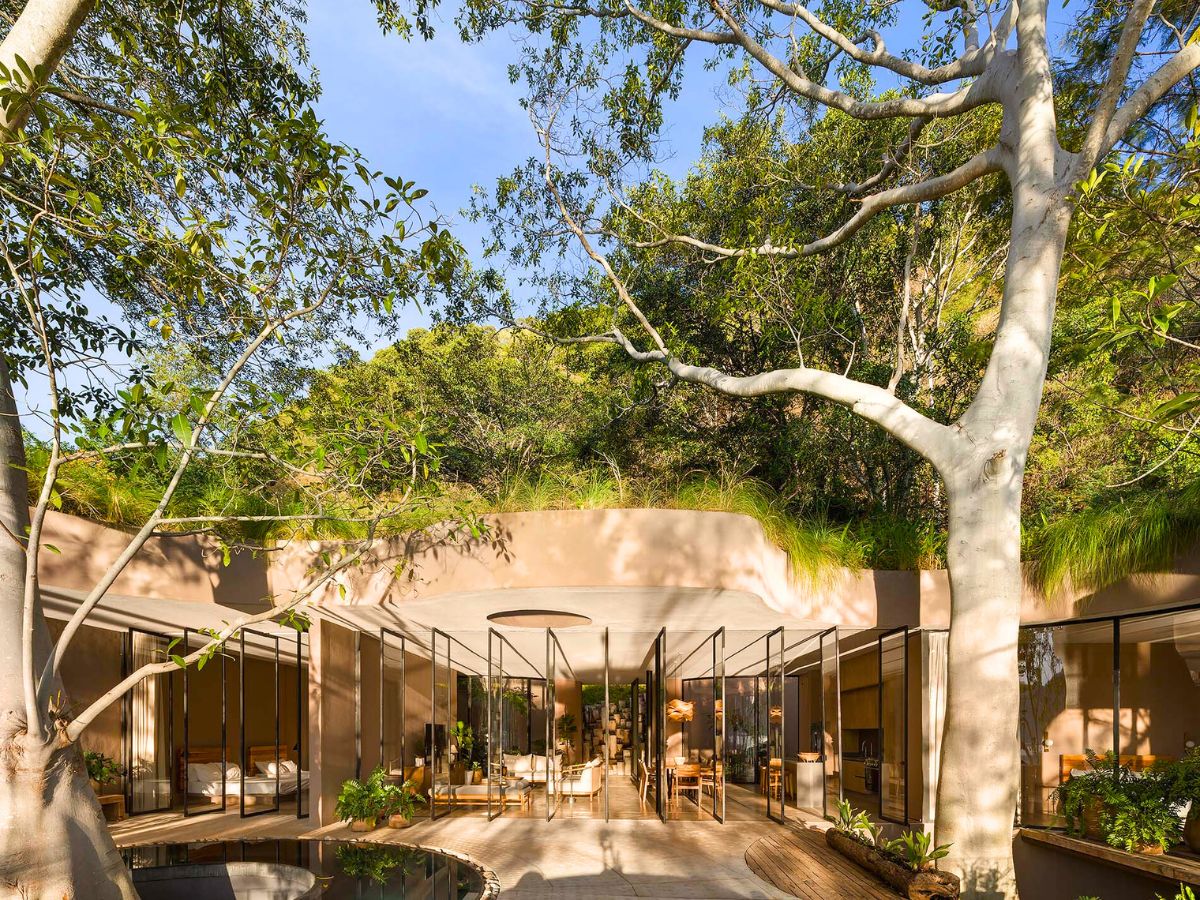
Sustainability is the guiding principle of this project. Decarbonization principles are deeply implanted in the house's design, aimed at minimizing its ecological footprint while maximizing its efficiency and longevity. Decarbonization refers to reducing carbon emissions to counter climate change. This house achieves sustainability by using less concrete and incorporating local stones for masonry.
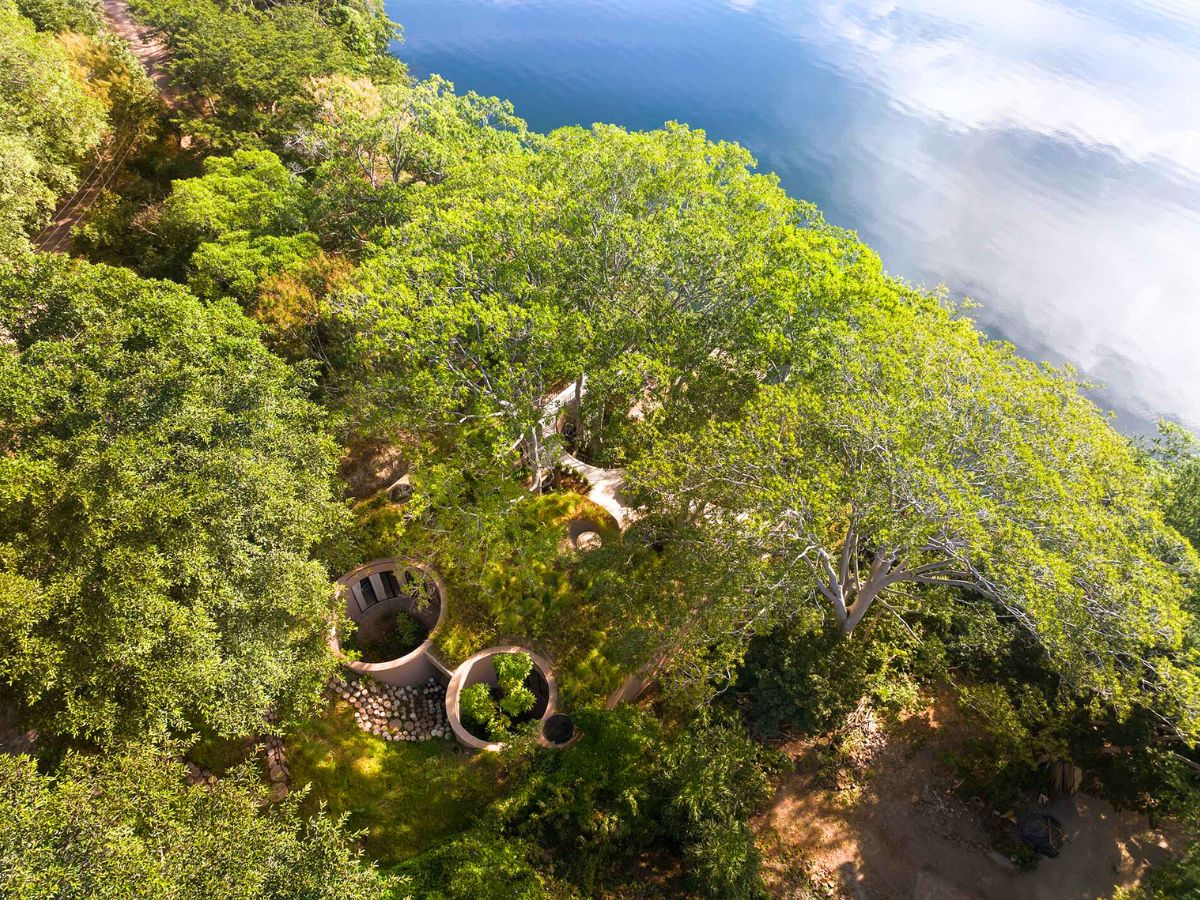
These materials have a low installation impact and high durability, ensuring the project's preservation over time. The reduced carbon footprint is not just about materials but also reflects a broader commitment to environmentally conscious living, promoting a harmonious balance with nature and respecting the delicate ecosystem of the site. This approach ensures that the construction process and the final structure have minimal adverse effects, reinforcing the idea that sustainable architecture can be both practical and aesthetically pleasing.
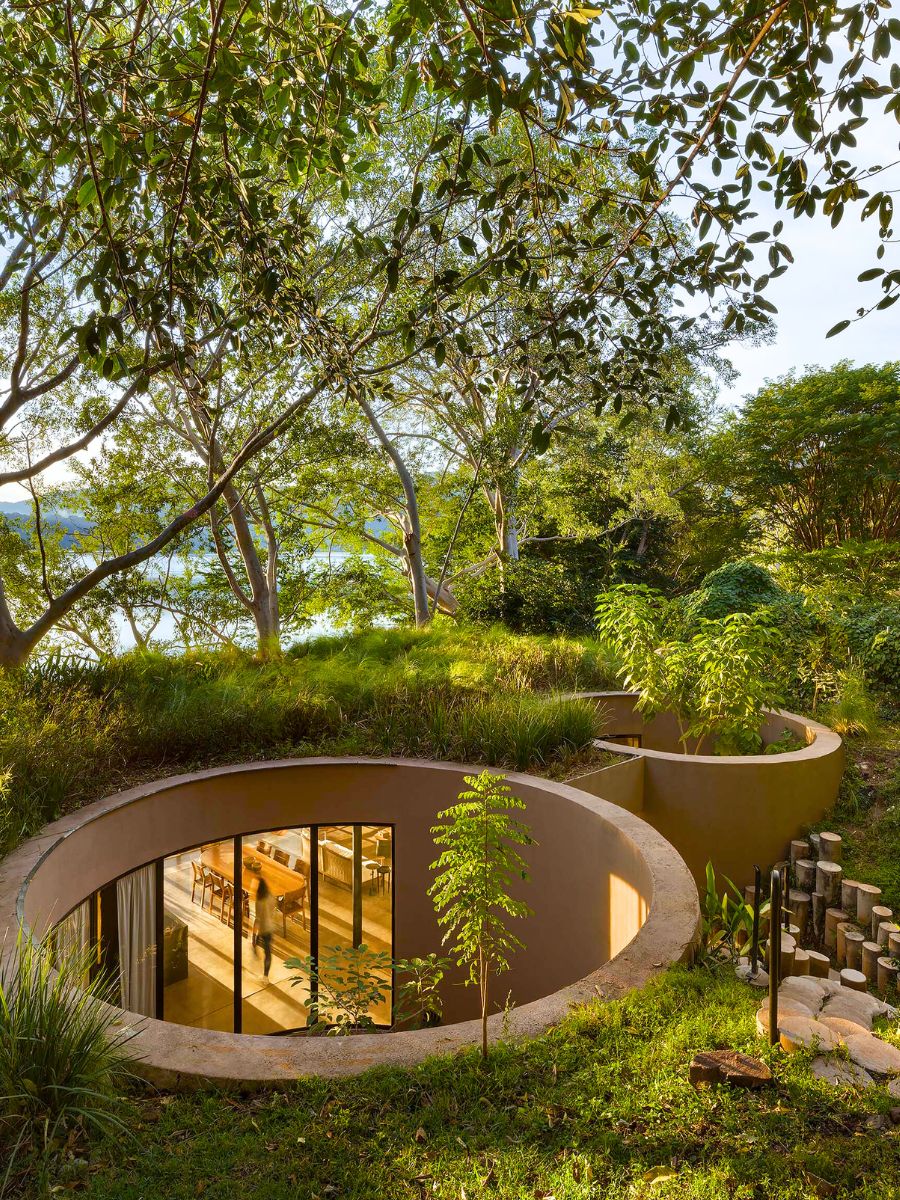
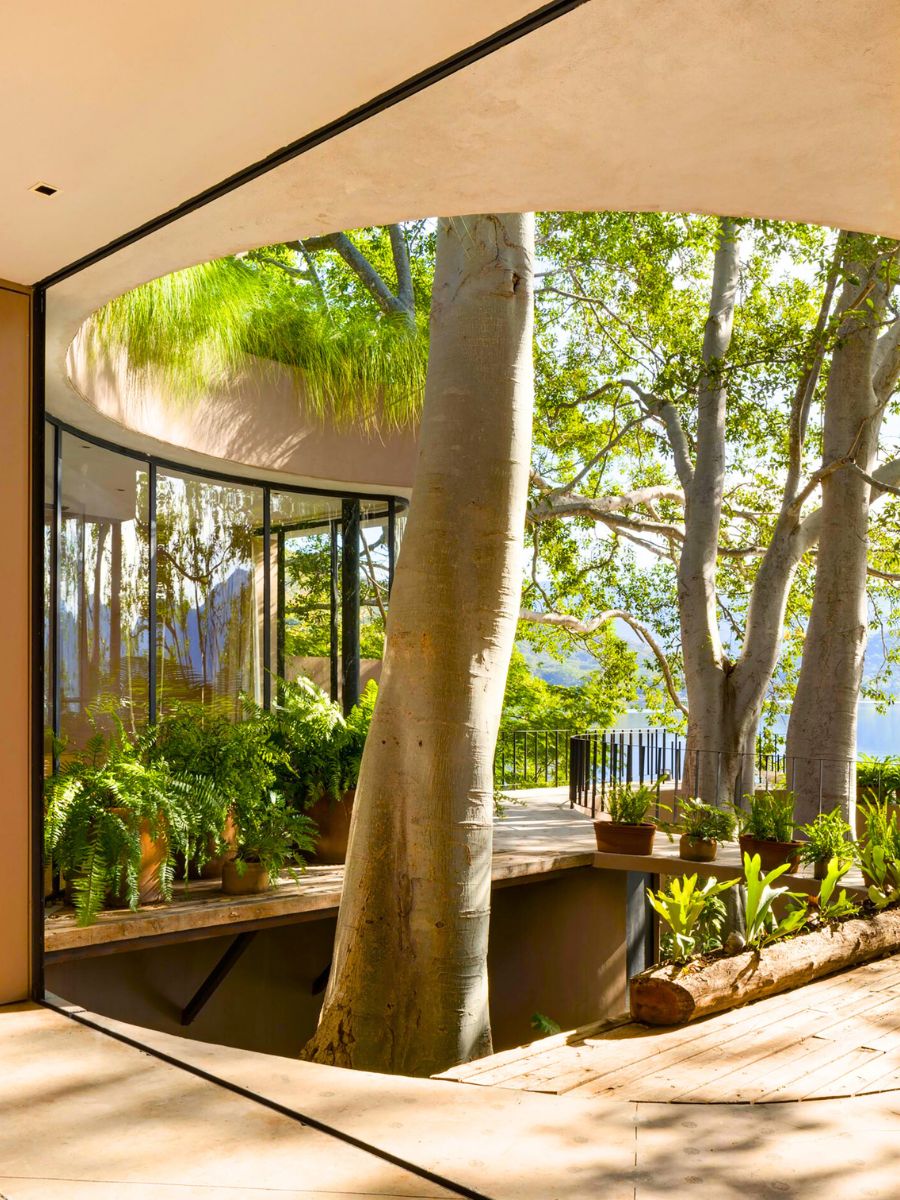
A Reconnection With Nature and Lesson About Sustainable Design
The main proposal of the project is rekindling visitors' relationship with nature through the architectural design, allowing people to deeply enroot and connect with trees, green areas, and the silence of a natural environment for the soul. The house features three bedrooms, a central social space, and an expansive terrace with a circular pool, allowing occupants to enjoy the surrounding nature of these stunning Mexican areas. Access is via a 20-meter staircase designed to blend with the site and manage rainwater.
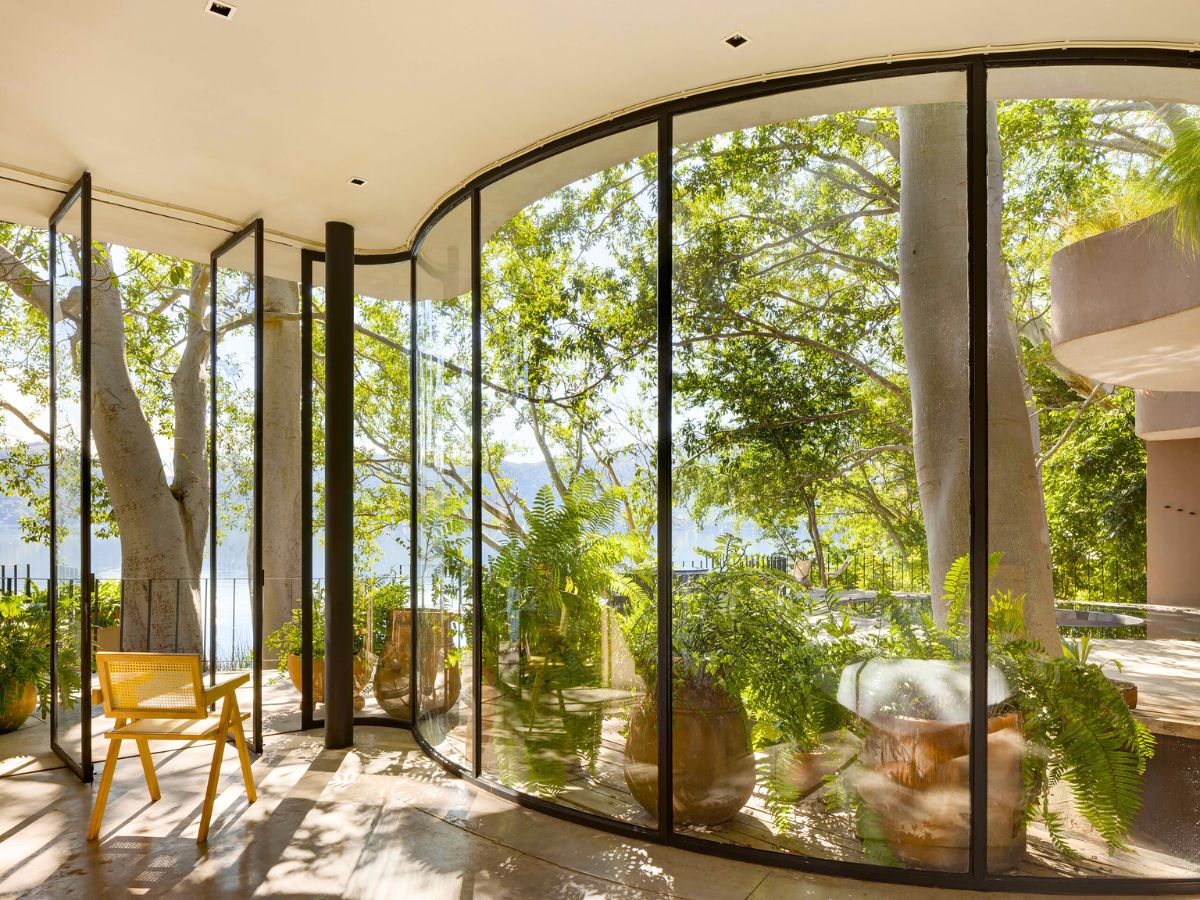
The house's volume is hidden in the slope, with terraces opening to the lake. Natural light and cross ventilation are optimized through the strategic placement of trees, creating interior patios that illuminate common areas and bedrooms.
The positioning of the courtyards permits natural lighting and cross ventilation throughout the building, while planting helps to further blend the home with its surroundings. In the terraces and internal courtyards of the house, native tropical gardens from the region grow, achieving better integration with the natural context.
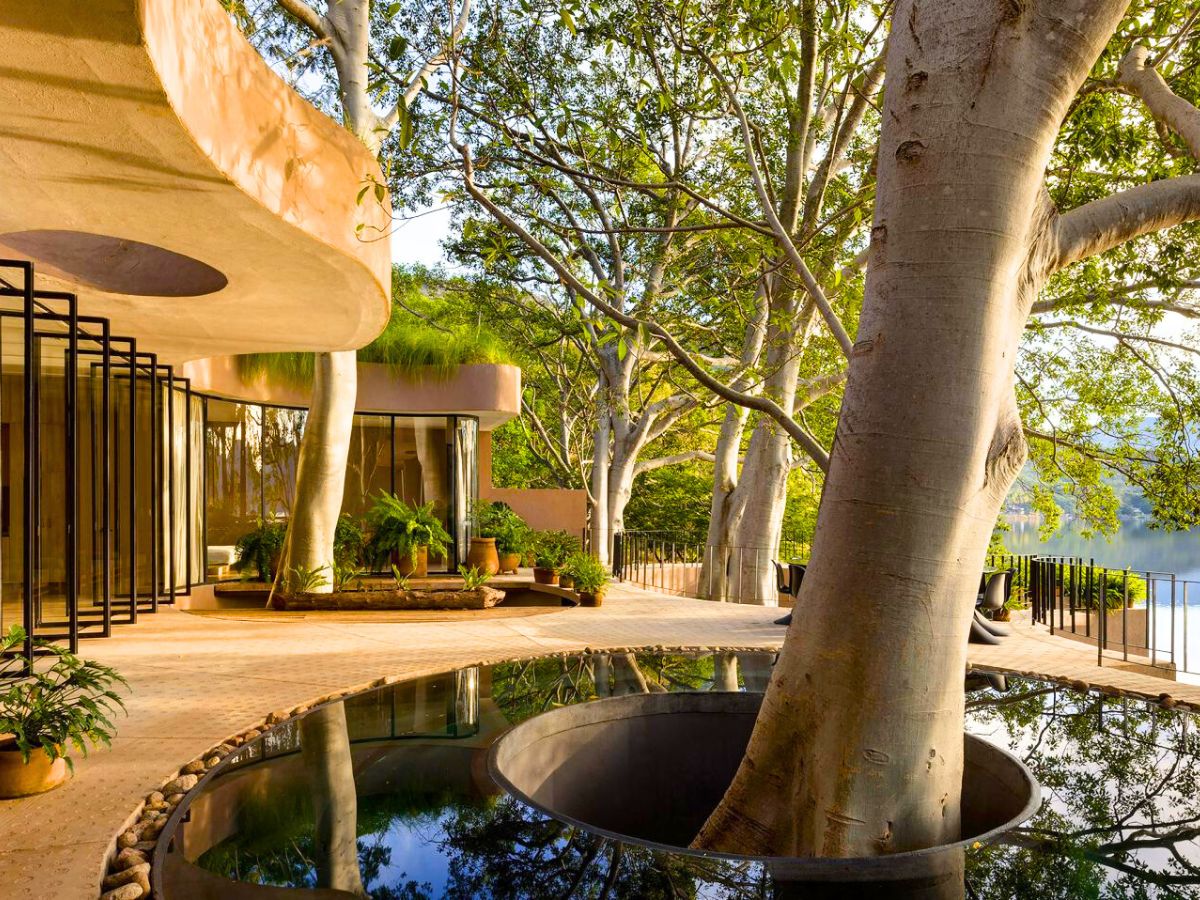
The proposal includes measures for rainwater collection and filtration to conserve and separate blackwater from rainwater. The collected water passes through a biodigester with filters and then into an absorption well that oxygenates it, preventing lake contamination. Low-energy equipment and LED lighting are used, and a green roof camouflages the structure while providing passive cooling. Solar panels are planned for a future stage. Sustainable practices and design to the maximum level!
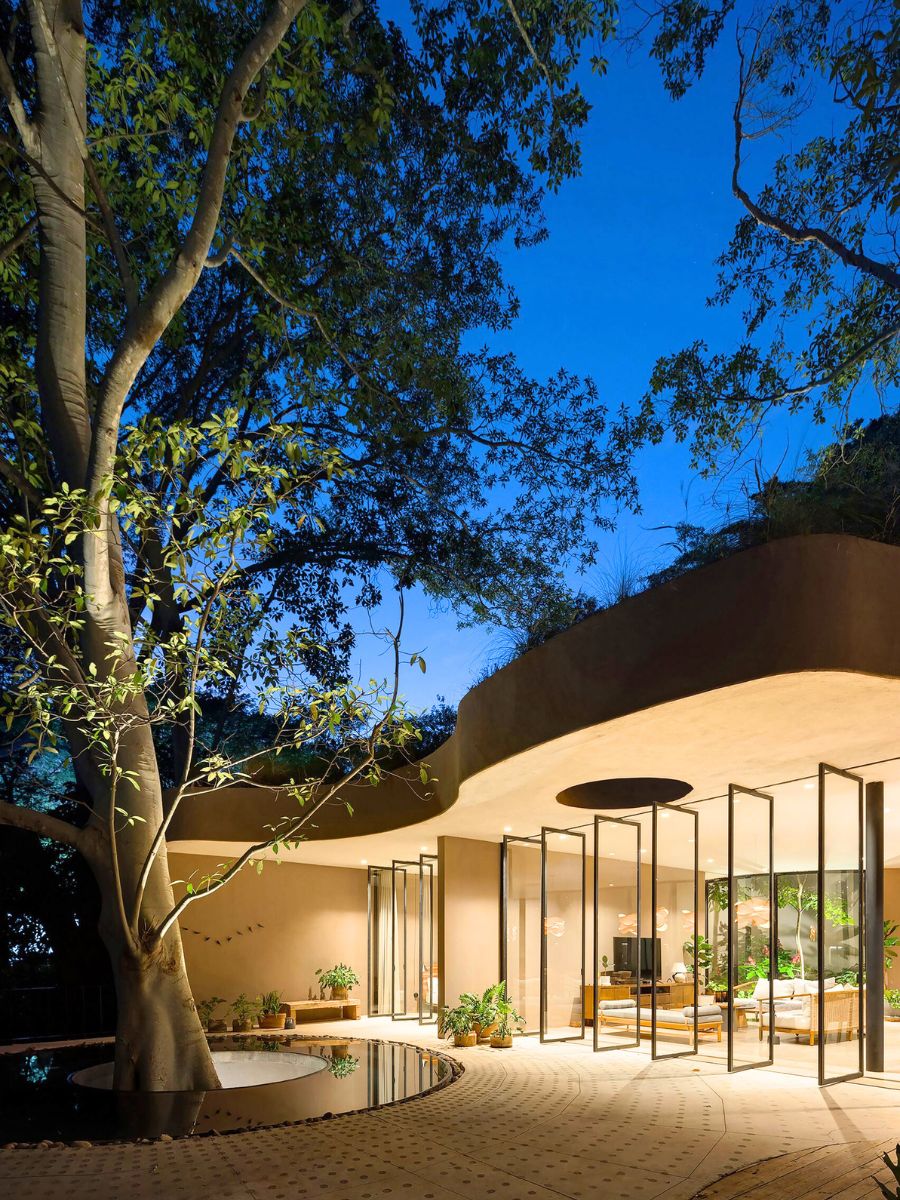
Colors That Resemble Nayarit and Its Beauty
The earthy tones found in the landscapes of Nayarit serve as the inspiration for the brown and beige colors used to create wall finishes that adopt modernity while honoring Mexican heritage. Every area narrates stories of customs, development, and the importance of preserving trees and forests not only in the Yucatan Peninsula but in all of Mexico and the world. This architectural project is an example of how nature, community, and creative design can coexist peacefully.
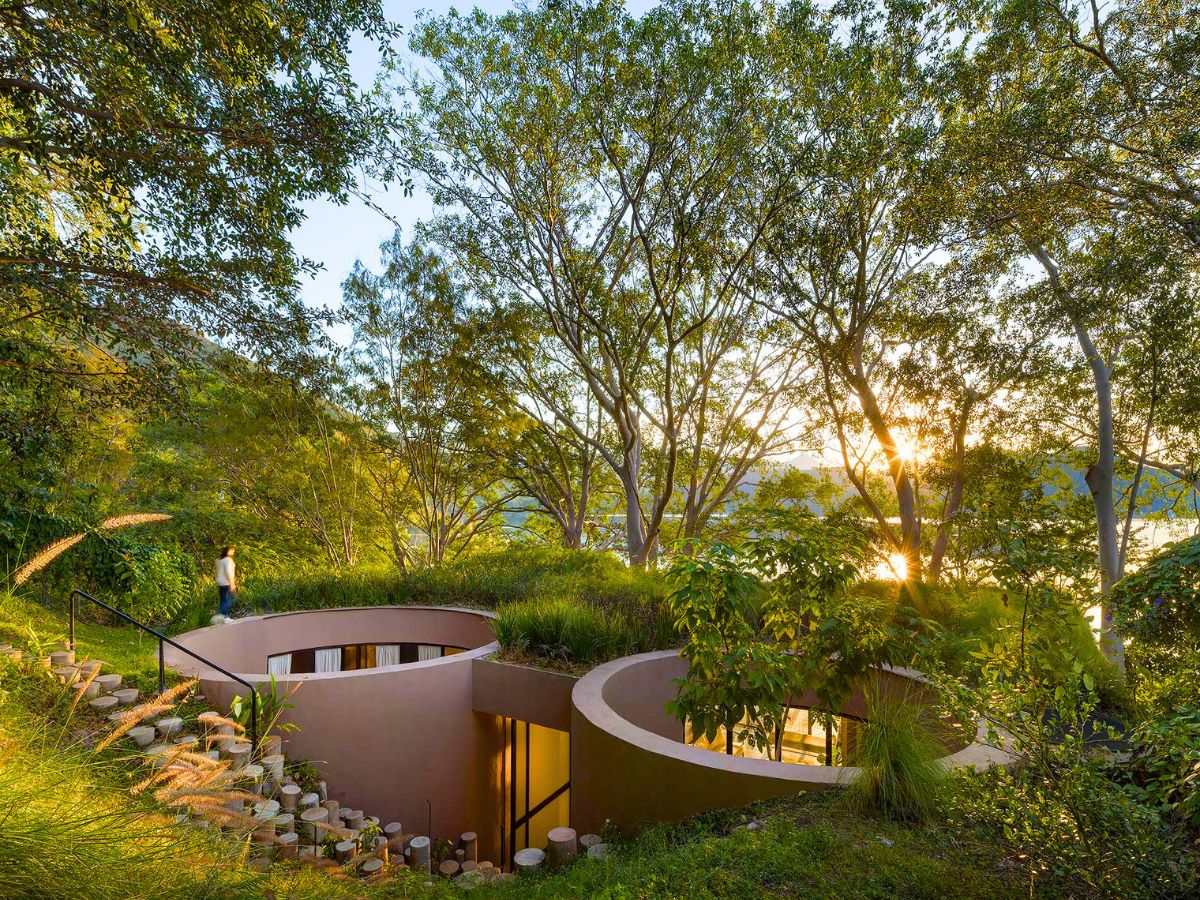
Casa Santa Maria del Oro represents and understands the value of cooperation, sustainability, and cultural fusion in building environments that uplift, inspire, and safeguard humankind.
All photos by @rafaelgamo.

